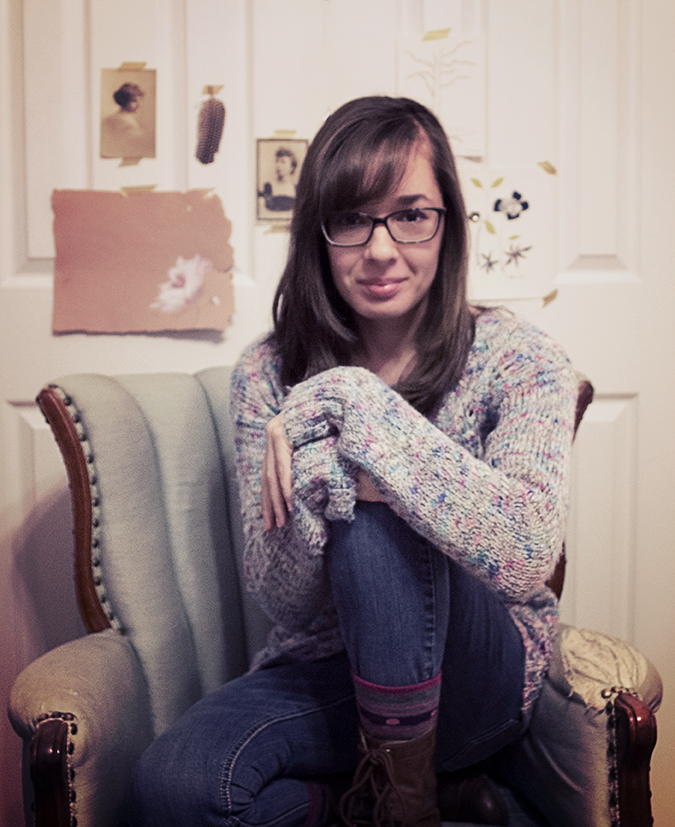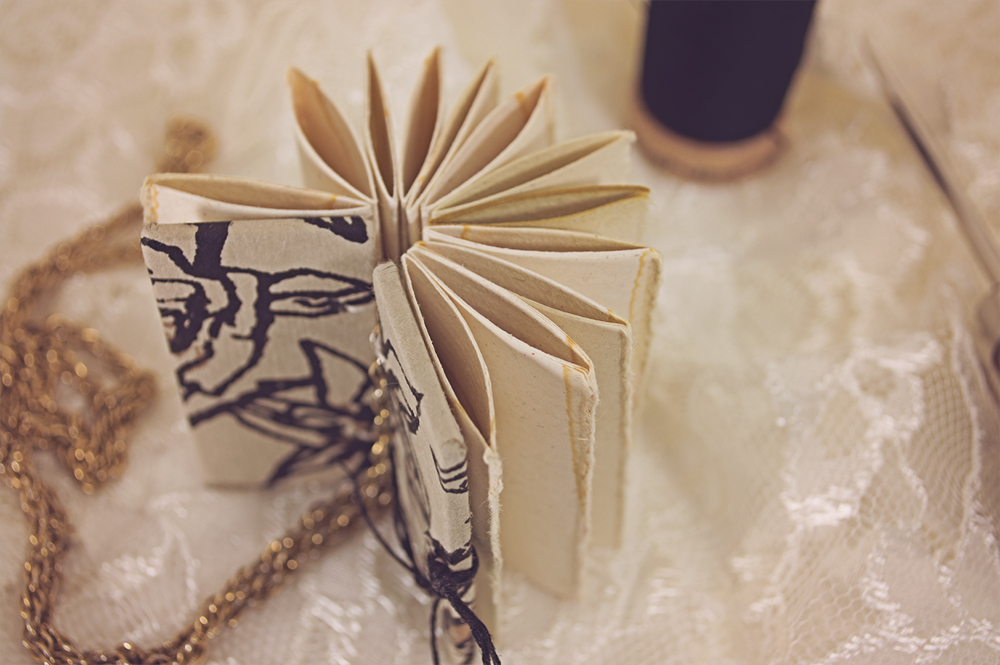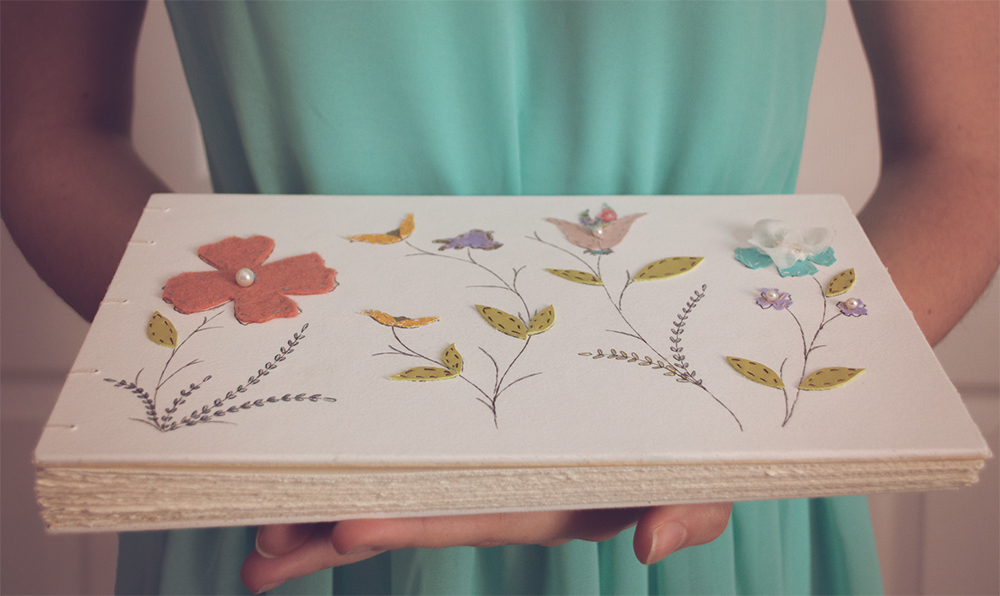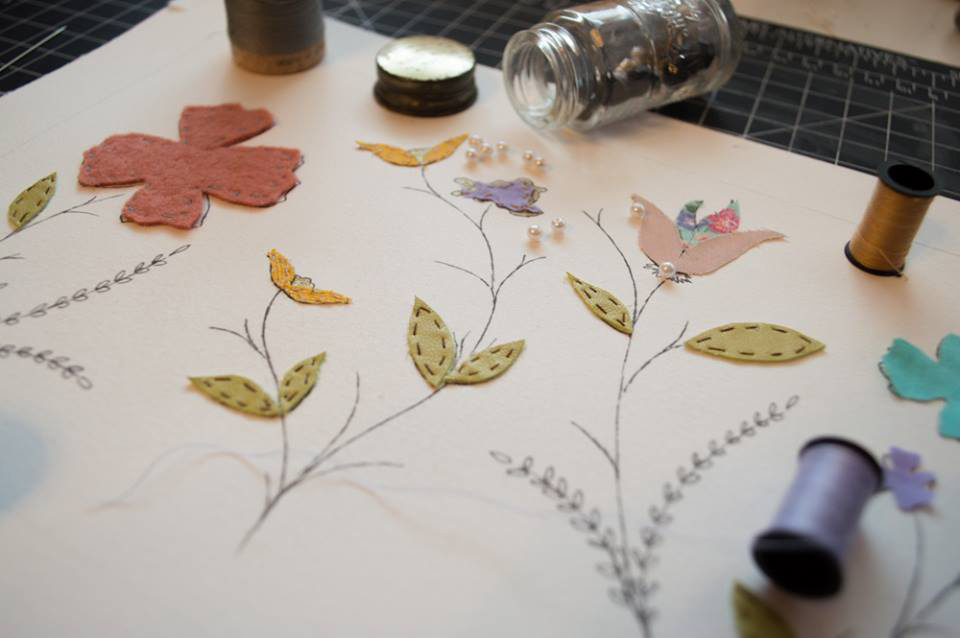
Written by Samelia Bankole, contributor
Katie Miller, a junior undergraduate writing major, who is minoring in book arts, is a colorful artist. She is extremely versatile; she is interested in many art forms that include jewelry making, photography and writing. Recently, Miller started her own book making press, Soft Spoken. Her interest in book arts started with her love for paper. Her favorite projects in high school were collages where she used vintage postcards and old photographs. When she interned at Straw Hat Press in the summer of her second year at SCAD, she decided to pursue book arts for her minor.

As an intern, she helped the printmakers of the small press make books for clients. While creating these books, she learned the Coptic stitch, a hand-sewn method of binding where the stitches run across the book’s spine in intricate threads, and it became her preferred way of binding. After the internship, Miller wanted to make her own books, so she began her small business.
The name, Soft Spoken, came from a personal place. She says, “As an individual, I’m quiet, shy and soft spoken, and I have always searched for a creative outlet to express myself. Soft Spoken really encompasses ideas of finding your voice, communication, speaking and expressing yourself, not always verbally, but through art.”
The books she likes to make are journals both for the writer and the visual artist. Miller’s inspiration for the design of her journals is her love for natural world. She says, “I have always been in love with natural and organic shapes, foliage, botanicals and floral designs.”
Her journals are all handmade because she loves the natural process of creating and the feel of paper. The Coptic stitch process is one that goes step by step. First, she chooses her paper, which is usually sketching or drawing paper. She picks the paper with color scheme and textiles in mind. She knows the size of the book and cuts down the paper and chipboard for the book covers to fit. Then she glues down paper to cover the boards and screws holes in it for the binding process.

In terms of folding pages, the process goes sheet by sheet. One sheet is a folio in printmaking. Three to five folios become a signature. She places all the signatures she folds together and begins stitching. Decorating the covers is one of the fun parts of the book-making process for Miller. This is where she adds her fabric floral designs by stitching into the paper before gluing it down to the board.
The end is a finished product that anyone (not necessarily just a creative person) can enjoy. The pages of her handmade journals are usually blank. “I like the idea of the blank canvas for drawing or for writing. Lines can provide structure, but they can also block creativity whether you want to draw, sketch, or write spastically on the page, which is what I like tio do,” Miller says.
In addition to journals, she has created her own “book necklaces,” which are smaller versions of her journals but in jewelry form. She thought that it would be a good idea for someone to be able to wear a handmade journal that they can write in if they want to. She says: “I think people are fascinated by extremes, big or small, items that no one would consider using for practical use. I think people find journal necklaces charming for the fact that they are different.”

Katie Miller hopes to learn more about the process and expand her company. This includes incorporating papermaking into her designs and learning new binding styles. One area that she would like to expand into is the publishing process. As a writer, she hopes to offer a service to writers who want to publish their novels or collections by producing their work in handmade books. She sees the venture as an exciting opportunity to give voice to writers who are often ignored by the larger publishing industry. Hiring a team to help would be a big step for the future, but for now, she is in a happy place and wouldn’t trade it for the world.




















